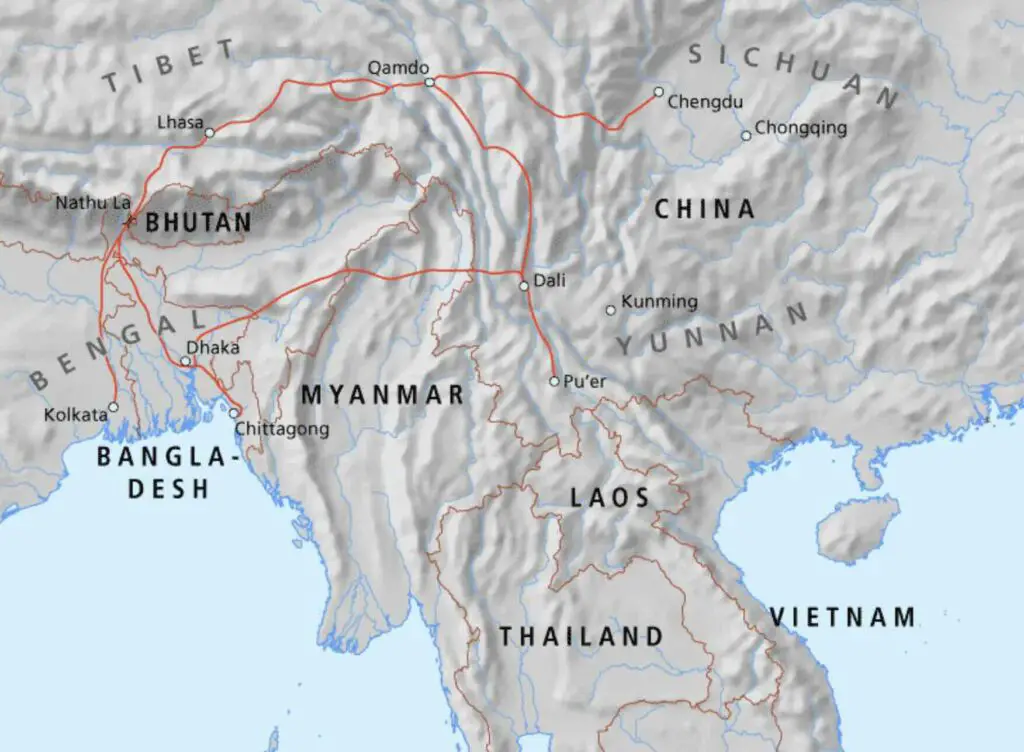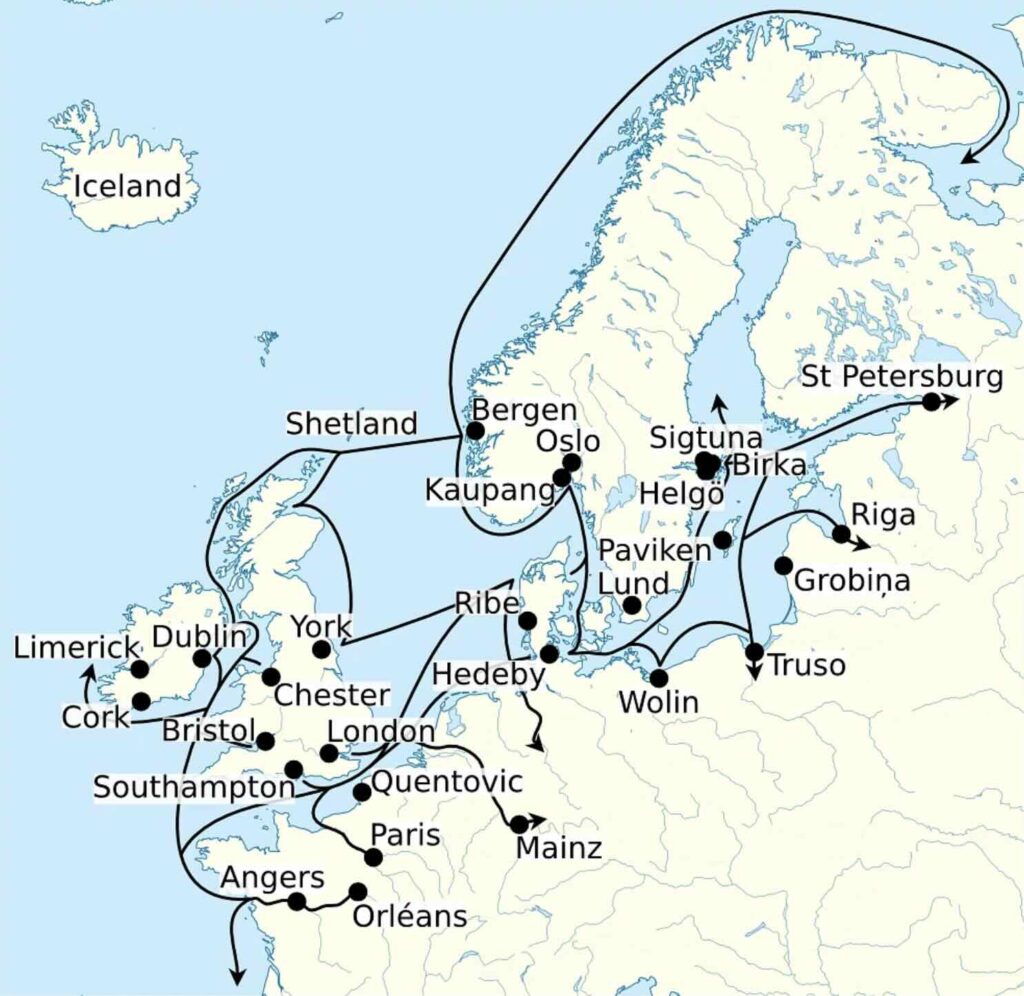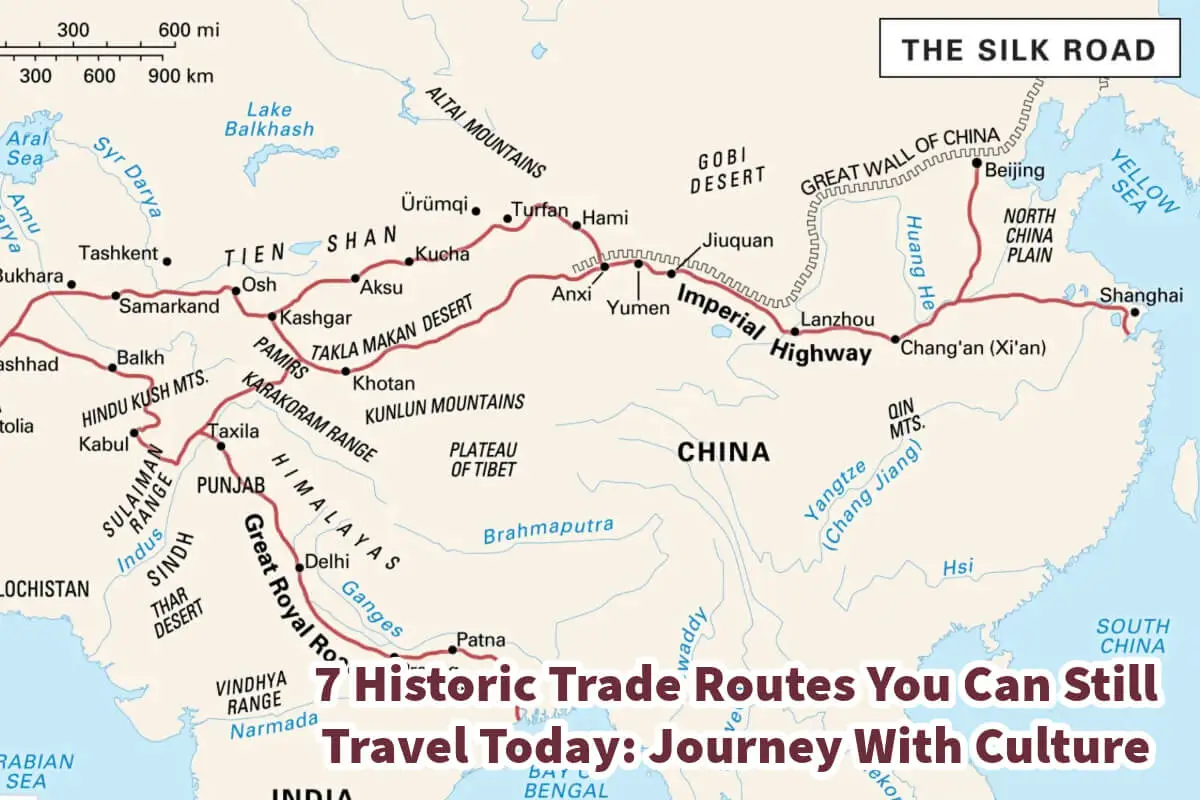Today’s travel revolves around modern attractions, luxurious destinations, and meticulously curated experiences.
For those who crave a connection to the past, few experiences rival the sense of adventure and historical significance offered by following ancient trade routes. Once bustling with merchants, explorers, and adventurers, these routes played a crucial role in shaping human history, bridging continents, and fostering the exchange of goods, ideas, and cultures.
Table of Contents
- 7 Historic Trade Routes You Can Still Travel Today: Journey Through Time and Culture
- 1. The Silk Road: Traversing Asia’s Most Famous Trade Route
- 2. The Spice Route: A Journey of Exotic Flavors and Cultures
- 3. The Incense Route: Following the Fragrant Trade of Arabia
- 4. The Amber Road: Europe’s Prehistoric Highway
- 5. The Tea Horse Road: China’s Ancient Mountain Trail
- 6. The Viking Routes: Maritime Highways of the North
- 7. The Trans-Saharan Trade Routes: Crossing the Desert for Gold and Salt
- Why You Should Travel Historic Trade Routes
- Related Questions
7 Historic Trade Routes You Can Still Travel Today: Journey Through Time and Culture
We will explore some of the world’s most famous historic trade routes that you can still travel today, from the legendary Silk Road to the exotic Spice Route. By tracing these ancient pathways, modern travelers can enjoy breathtaking landscapes and historical landmarks and experience the cultural richness that continues to thrive along these routes.
We’ll explore why these journeys are worth undertaking and offer insights on how to travel them today.

1. The Silk Road: Traversing Asia’s Most Famous Trade Route
The Silk Road is undoubtedly one of the world’s most famous ancient trade routes. Stretching over 7,000 kilometers, it connected China with Europe and the Middle East, facilitating the exchange of silk, spices, precious stones, and cultural ideas. This legendary route wasn’t just about trade; it was a conduit for the spread of religions, philosophies, and technologies between civilizations.
Why You Should Travel the Silk Road
The Silk Road offers more than just a historical journey—it provides an opportunity to experience Asia’s diverse landscapes and cultures. From the bustling markets of Xi’an, where the Silk Road began, to the deserts and mountains of Central Asia, following this ancient route allows travelers to explore some of the most storied and remote parts of the world.
Today, the countries that the Silk Road passed through, such as China, Uzbekistan, Kyrgyzstan, and Iran, are home to a stunning array of historical sites. You can visit ancient caravanserais, bustling bazaars, and UNESCO World Heritage Sites that still preserve the atmosphere of centuries-old trade and cultural exchange.

How to Travel the Silk Road Today
One of the best ways to experience the Silk Road today is by land, retracing the path taken by merchants, monks, and past explorers. Here are a few suggestions:
- By Train: For a comfortable and scenic journey, the China Silk Road Train offers organized trips that follow a vital portion of the route. The train takes travelers from Xi’an to Kashgar, with stops at major historical sites like the Mogao Caves and Turpan.
- By Car or Motorcycle: Adventurous travelers can organize overland trips through Central Asia, exploring the ancient cities of Samarkand, Bukhara, and Khiva in Uzbekistan and continuing into Kyrgyzstan and western China. Local operators often arrange guided tours through this region.
- By Bike or Foot: For those seeking a more immersive experience, cycling or trekking segments of the Silk Road, mainly through the Pamir Mountains or the deserts of Turkmenistan, offers an unforgettable journey into the heart of Central Asia.

2. The Spice Route: A Journey of Exotic Flavors and Cultures
The Spice Route was an ancient maritime trade route that connected the East Indies, Southeast Asia, India, the Middle East, and Europe. It is best known for transporting spices such as cinnamon, cloves, nutmeg, and pepper, which were incredibly valuable in medieval Europe.
This route also facilitated the exchange of textiles, precious metals, and ideas between the East and West.
Why You Should Travel the Spice Route
Traveling the Spice Route today offers a taste of exotic cultures, scenic seascapes, and vibrant history. From the lush spice plantations of Kerala in India to the tropical landscapes of the Maluku Islands in Indonesia, this journey allows you to explore regions that once fueled the world’s desire for spices and shaped global trade.
In addition to historical trade, the Spice Route also contributed to the blending of cultures, particularly in regions like the Malabar Coast of India and the trading ports of Oman. Following this route, travelers can visit ancient ports, explore spice markets, and experience the fusion of Arabic, Indian, and Southeast Asian cultures.
How to Travel the Spice Route Today
- By Boat: Some travelers may wish to sail portions of the Spice Route for a more authentic experience. You can charter boats along the coast of Zanzibar, Oman, or Indonesia to visit spice-growing regions and traditional ports.
- By Plane and Land: Modern travelers can follow the Spice Route by flying between major cities and regions historically linked. Start your journey in Kochi, India, where you can explore the spice markets and plantations, then fly to Zanzibar, Tanzania, to experience its famous spice tours.
- By Train: The Palace on Wheels train in India offers a luxurious way to explore Rajasthan, a region historically involved in the spice trade. You can pair this with visits to spice plantations in Kerala, combining luxury and historical exploration.

3. The Incense Route: Following the Fragrant Trade of Arabia
The Incense Route was a land route network connecting the Arabian Peninsula with the Mediterranean and the Indian Ocean. Traders transported valuable frankincense and myrrh from what is now Oman and Yemen through Saudi Arabia and Jordan, eventually reaching ports in Egypt and beyond.
Why You Should Travel the Incense Route
Traveling the Incense Route offers a journey through ancient desert landscapes, including some of the world’s most significant archaeological sites. It was an essential trade route in antiquity, and following it today allows travelers to explore cities like Petra, the rose-red city carved into rock, and Al-‘Ula in Saudi Arabia, home to dramatic desert landscapes and historic tombs.
How to Travel the Incense Route Today
- By Road: For travelers interested in retracing this route, you can travel by car or join guided tours that take you through key stops, such as Salalah in Oman (the home of frankincense), Al-‘Ula in Saudi Arabia, and Petra in Jordan.
- By Air and Jeep: Many travel operators in Oman and Jordan offer excursions to remote desert locations along the Incense Route, providing a taste of Bedouin culture and exploring ancient caravanserai ruins.

4. The Amber Road: Europe’s Prehistoric Highway
The Amber Road was a prehistoric trade route that connected the Baltic Sea with the Mediterranean. It was named after the valuable amber transported from northern Europe, primarily the Baltics, to regions as far south as Greece and Italy. Amber was highly prized in antiquity, used for jewelry, medicine, and as a symbol of wealth.
Why You Should Travel the Amber Road
For travelers interested in ancient history and European heritage, the Amber Road offers a journey through some of Europe’s most culturally rich and scenic regions. The route passes through Poland, Germany, and Austria, allowing travelers to explore ancient towns, historic castles, and natural beauty.
How to Travel the Amber Road Today
- By Train or Car: Travelers can drive or take the train through regions like Gdańsk in Poland, where amber is still a significant part of the local economy. They can then continue through Kraków and into Austria, following a path similar to amber traders thousands of years ago.
- By Boat: Sailing along the Baltic coastline, particularly around Lithuania and Latvia, offers a modern-day glimpse into the regions where amber was historically sourced.

5. The Tea Horse Road: China’s Ancient Mountain Trail
The Tea Horse Road was a dangerous trade route that stretched from China’s tea-growing regions in Yunnan province to Tibet and further into India and Nepal. It was an essential trade route for transporting tea and horses, with traders braving rugged mountain terrain and high altitudes to conduct their exchanges.
Why You Should Travel the Tea Horse Road
The Tea Horse Road offers a unique combination of natural beauty and cultural depth. Traveling along this route allows you to explore remote villages, witness traditional Tibetan culture, and experience stunning mountain landscapes relatively untouched by modern tourism.
How to Travel the Tea Horse Road Today
- By Foot or Horse: Adventurous travelers can still trek portions of the Tea Horse Road, particularly in Yunnan and Sichuan provinces, where the ancient trails wind through mountains and valleys. Horseback tours are available for those who want a more authentic experience.
- By Train and Car: For a more accessible journey, modern travelers can combine segments of the Tea Horse Road with train or car travel, visiting ancient towns like Lijiang and Shangri-La, known for their traditional architecture and links to the old trade route.

6. The Viking Routes: Maritime Highways of the North
The Vikings were legendary seafarers and traders, navigating the waters of the Baltic Sea, the North Atlantic, and beyond. Their routes connected Scandinavia with the British Isles, Greenland, and even parts of North America. These routes weren’t just for raids—they were essential for trade in furs, timber, and other resources.
Why You Should Travel the Viking Routes
Exploring the Viking trade routes allows travelers to delve into the maritime culture of Scandinavia and visit key historical sites such as Birka in Sweden, Roskilde in Denmark, and L’Anse aux Meadows in Newfoundland, Canada—the site of the first known European settlement in North America.
How to Travel the Viking Routes Today
- By Ship: Numerous cruise lines offer itineraries following Viking routes through the Norwegian fjords, the Baltic Sea, Iceland, and Greenland.
- By Car: Drive through Scandinavia, exploring Viking museums and historical sites in Denmark, Norway, and Sweden, where Viking culture still has a significant presence. If you do not want to travel by car, Scandinavia has a decent train and public transportation system.

7. The Trans-Saharan Trade Routes: Crossing the Desert for Gold and Salt
The Trans-Saharan trade routes connected North Africa with sub-Saharan Africa, facilitating the trade of gold, salt, and slaves. Caravans crossed vast stretches of the Sahara Desert, traveling between the ancient cities of Timbuktu, Gao, and Fez.
Why You Should Travel the Trans-Saharan Trade Routes
Traveling this route offers an immersion into the cultural and historical richness of North and West Africa. You can visit Timbuktu, once a thriving center of learning and trade, or explore the ancient Kasbahs of Morocco.
How to Travel the Trans-Saharan Trade Routes Today
- By Camel or Jeep: In regions like Morocco and Mali, travelers can embark on desert treks by camel or four-wheel drive, exploring ancient trading centers, oases, and Berber villages.
Why You Should Travel Historic Trade Routes
Following the paths of ancient traders offers travelers a unique opportunity to connect with history, culture, and nature in ways that traditional tourism can’t match. These trade routes shaped civilizations fostered cultural exchanges and created global connections that still resonate today. Whether you’re trekking the Silk Road, sailing the Spice Route, or crossing the Sahara by camel, you’ll greatly appreciate the people who paved these paths and the vibrant cultures that continue to thrive along them.
By retracing these historic trade routes, modern travelers can experience the beauty of timeless landscapes, the legacy of ancient empires, and the rich tapestry of human culture that has developed over millennia.
At A Bus On A Dusty Road, we talk about everything about travel, life, sailing, and ex-pat living. We are all about “Living Life As A Global Citizen.” We explore social, cultural, and economic issues and travel.
We would love to have you be part of our community. Sign up for our newsletter to keep up-to-date by clicking here. If you have any questions, you can contact me, Anita, by clicking here.
Listen to our Podcast called Dusty Roads. You can find it on all major podcast platforms. Try out listening to one of our podcasts by clicking here.
Subscribe to our A Bus On A Dusty Road YouTube Channel with great videos and information by clicking here.
Related Questions
Best Virtual Challenges And Why We Love Them
Our top pick for doing a Virtual Challenge is the Conquer Virtual Challenge. We like the Conquer Virtual Challenge, but we appreciate their app and the many challenges they have worldwide. We love Virtual Challenges because we find them motivating, and it keeps us connected with others as we virtually travel around the globe.
By clicking here, you can discover Best Virtual Challenges And Why We Love Them.
Virtual Challenges – How Do They Work?
Virtual challenges are, as the name implies – virtual challenges – you will purchase the challenge and then have access to their app, allowing you to record your miles as you virtually complete a predetermined route. At the end of most challenges, you will receive a medal or certificate acknowledging that you have completed the actual miles.
You can learn more by reading Virtual Challenges – How Do They Work? by clicking here.
Is The Conqueror Virtual Challenge Legit?
The Conquer Virtual Challenge is 100% legit. Upon completing a challenge, you will receive a medal for acknowledging that you have completed the challenge. You can also pay extra to get a T-shirt or purchase other merchandise. Even though this challenge is 100% virtual, it is a great way to virtually experience other parts of the world.
You can discover more by reading Is The Conqueror Virtual Challenge Legit? 10 Things to Know And Understand by clicking here.

